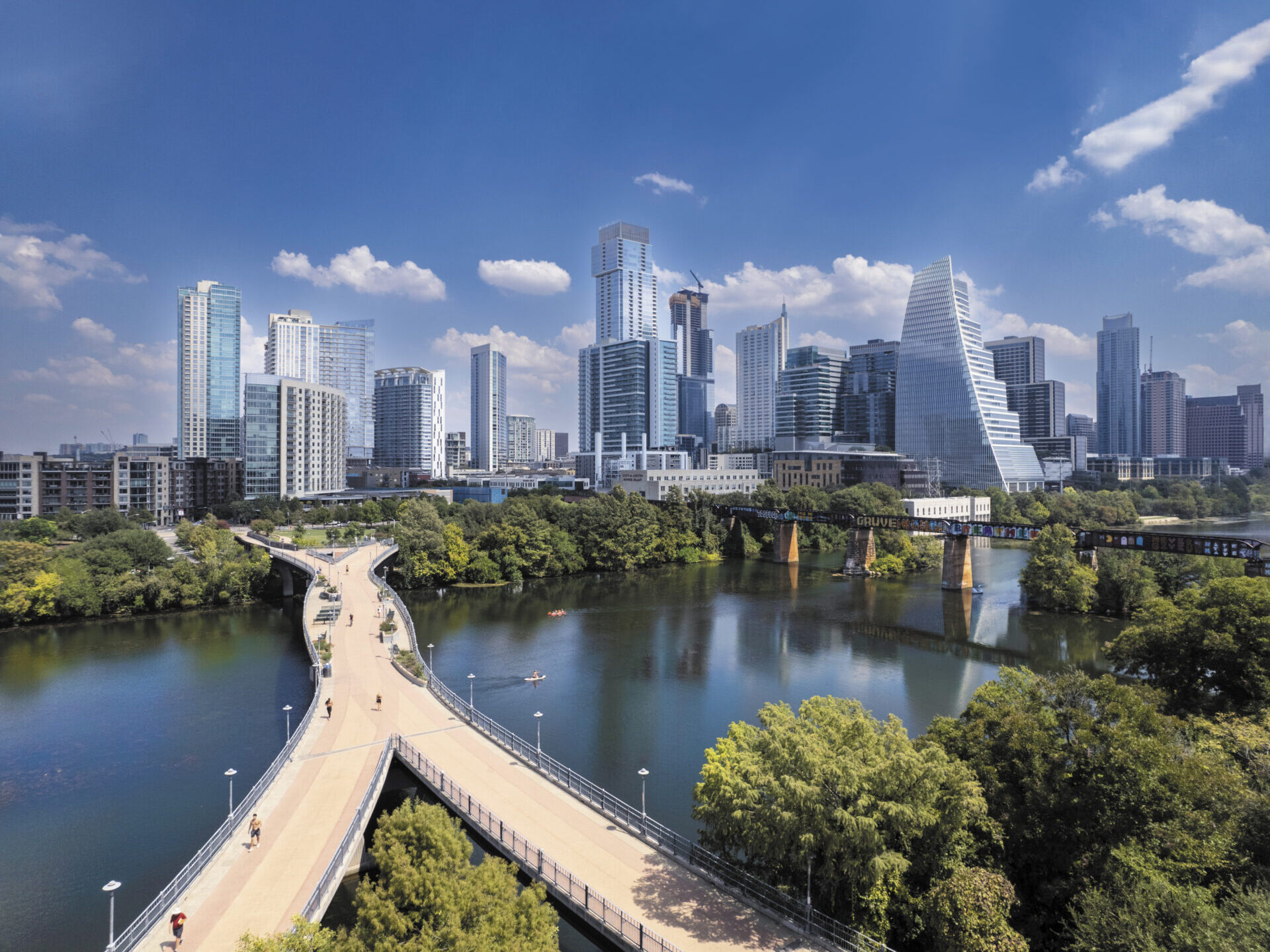When people think of Austin, they might picture live music echoing through the streets, but this city hums with more than just sound — it pulses with innovation, creativity, and an unmistakable sense of possibility. Downtown Austin is where that energy comes into full focus.
Downtown Austin:
Urban energy, natural beauty, and a city on the rise.
In the past decade, there has been a dramatic shift in homeowners trading in their single-family homes for a life of convenience in downtown Austin. High rises have become the most popular housing trend in the capital city, attracting every age demographic, due to their centralized proximity to all that downtown offers. The city is revisiting its roots by innovating and restoring many districts, business establishments, residential buildings, office buildings, and parks for its residents to enjoy. Austin is evolving but, as always, it’s keeping it weird.
From its walkable streets and skyline views to its vibrant food scene and deep-rooted culture, Downtown Austin blends the best parts of city living with the spirit that makes Austin… Austin. Whether you’re looking for a morning jog along Lady Bird Lake, dinner at a James Beard-nominated spot, or a late-night set at a local venue, it’s all right here. And the city’s only growing. With tens of thousands of new homes and office spaces planned or underway, more and more people are trading suburban sprawl for a front-row seat to everything Downtown has to offer. It’s an exciting time to live at the center of it all.
So where should you start your downtown journey? Each neighborhood in downtown Austin has its own personality — from music-filled streets to sleek residential enclaves. Whether you’re drawn to history, nightlife, green space, or cutting-edge design, there’s a district with your name on it. Here’s a closer look at some of the most vibrant corners of downtown.
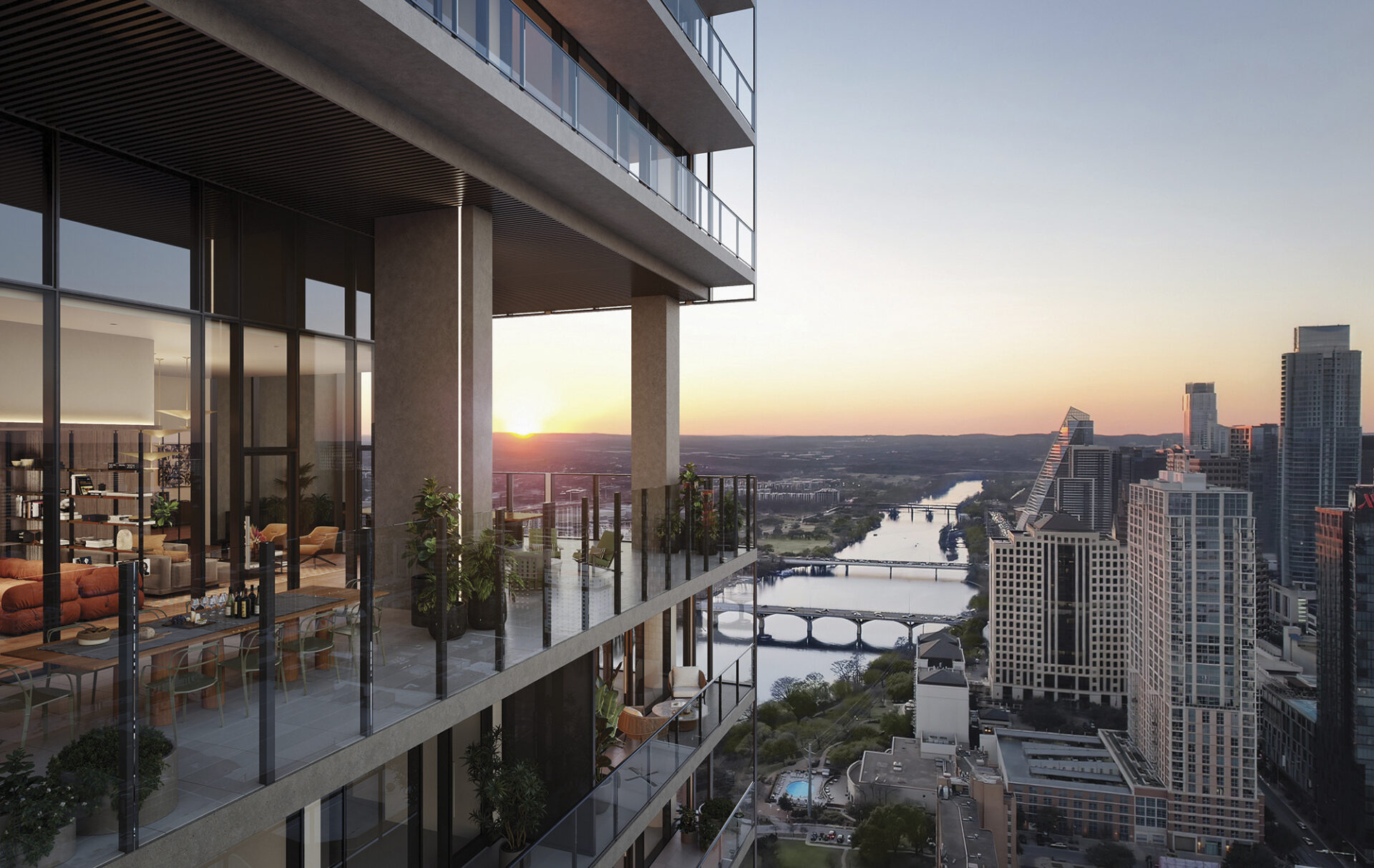
The Modern Austin, courtesy of Urbanspace
Rainey Street District
A once-sleepy neighborhood turned cultural hotspot, the Rainey Street District is where laid-back charm meets high-rise living. Since being rezoned as part of the Central Business District in 2004, Rainey has transformed into one of the most dynamic corners of downtown.
Today, it’s home to sleek residential towers like The Modern Austin Residences and 44 East Ave, alongside funky bungalow bars, top-tier restaurants, and live music spots that spill out onto tree-shaded patios. From tacos and mezcal at Veracruz All Natural to a nightcap at Lustre Pearl, Rainey balances old Austin soul with new Austin skyline.
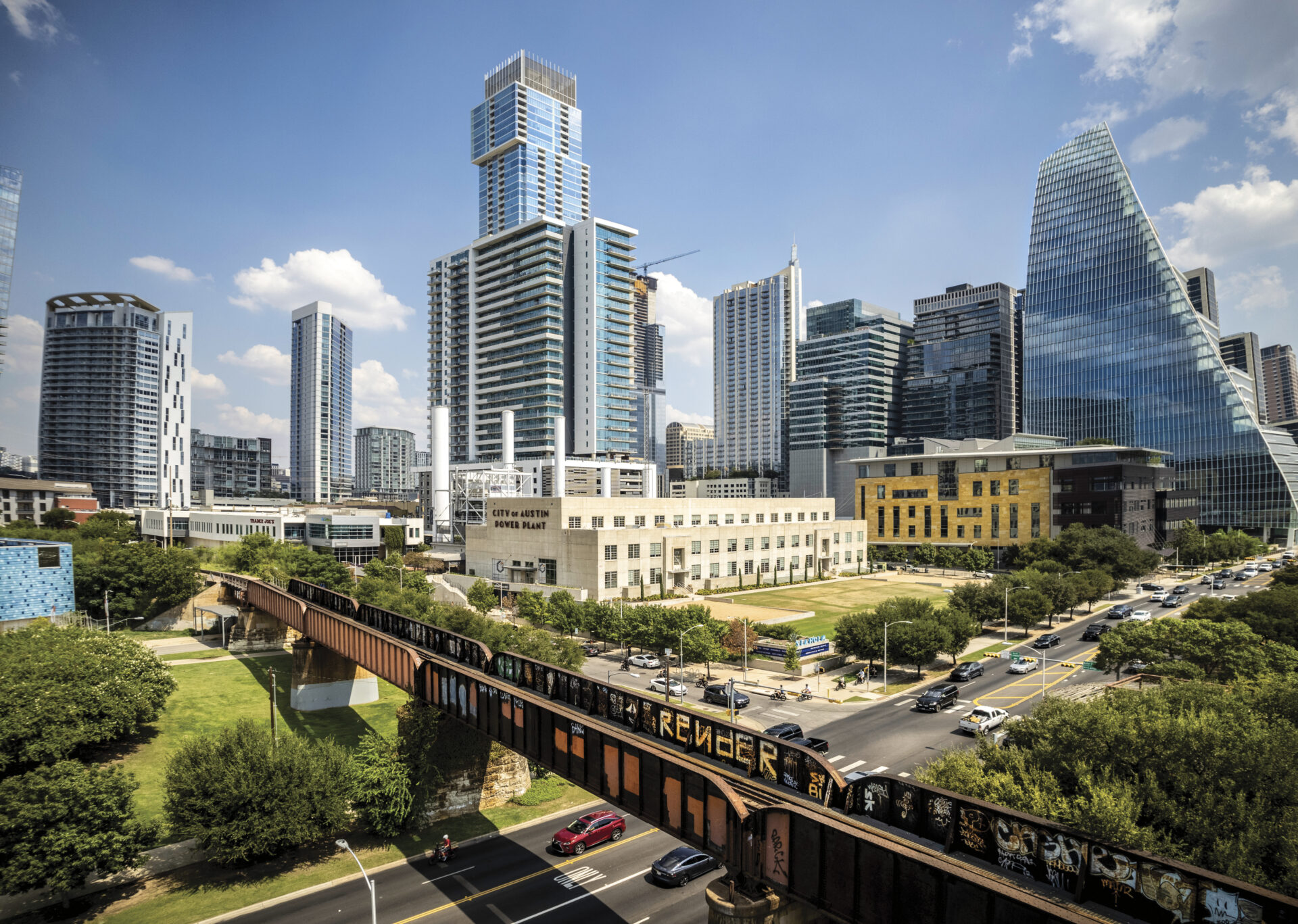
Seaholm District, photo courtesy of Urbanspace
Seaholm district
What was once a decommissioned power plant is now one of downtown Austin’s most forward-looking neighborhoods. The Seaholm District has undergone a remarkable transformation, blending urban design, green space, and cultural touchpoints into a true live-work-play destination.
Here, you’ll find everything from modern residential towers like Seaholm Residences & The Independent to creative office spaces; from riverside trails to local institutions like Trader Joe’s and the Austin Central Library. Shoal Creek’s revitalized trail system winds past The Independent and leads to Lady Bird Lake, while nearby restaurants and cafes bring daily life to this thoughtfully reimagined district.
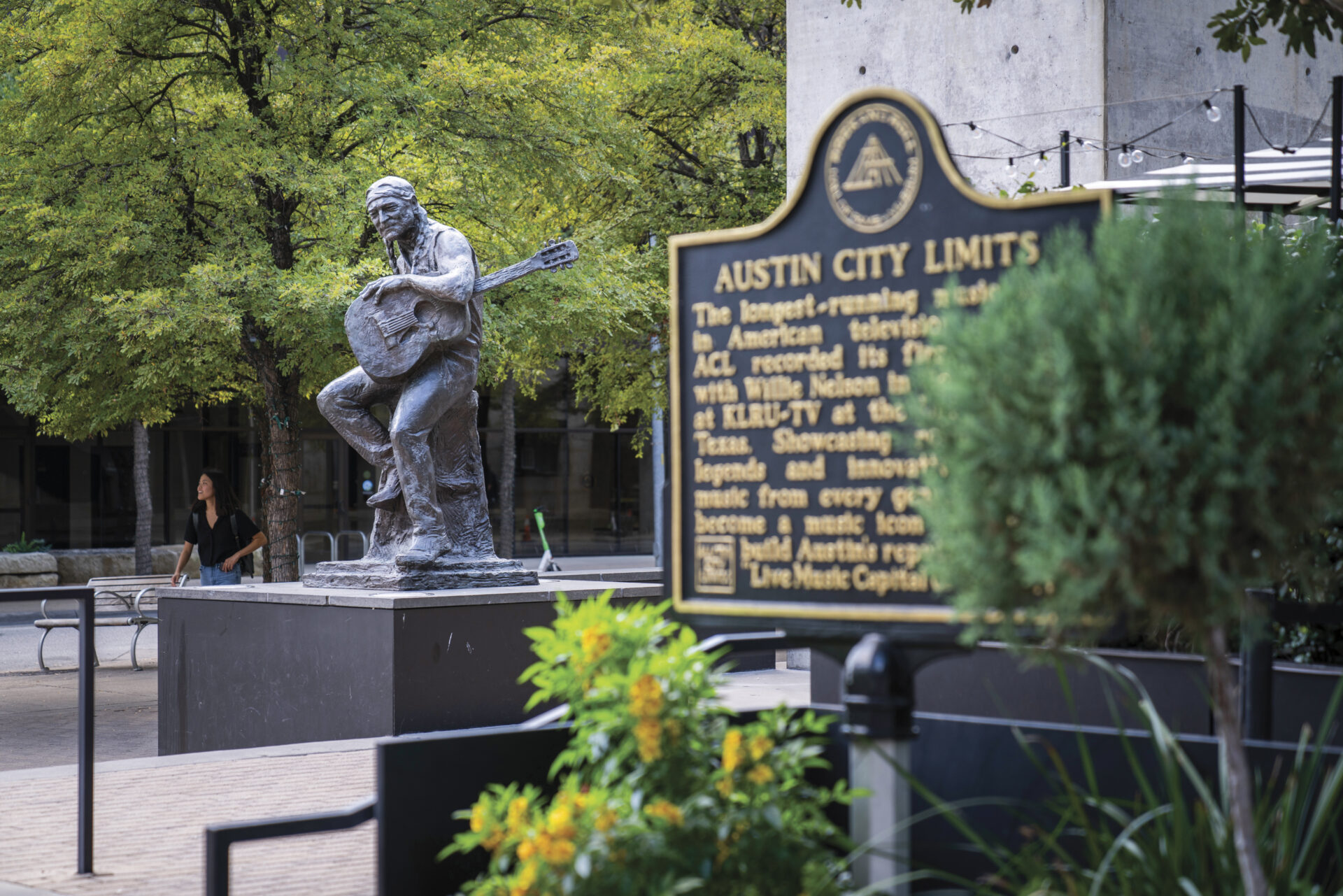
2nd Street District, photo courtesy of Urbanspace
2nd Street District
If downtown Austin has a heart, this might be it. The 2nd Street District is a vibrant hub for shopping, dining, and entertainment — a place where locals and visitors alike gather for a taste of Austin’s urban lifestyle.
Home to boutique shops, coffee spots, and beloved venues like ACL Live at the Moody Theater and Violet Crown Cinema, the area hums with day-to-night activity. Its central location makes it both a destination and a pass-through — perfect for grabbing a bite, catching a show, or simply strolling and people-watching.
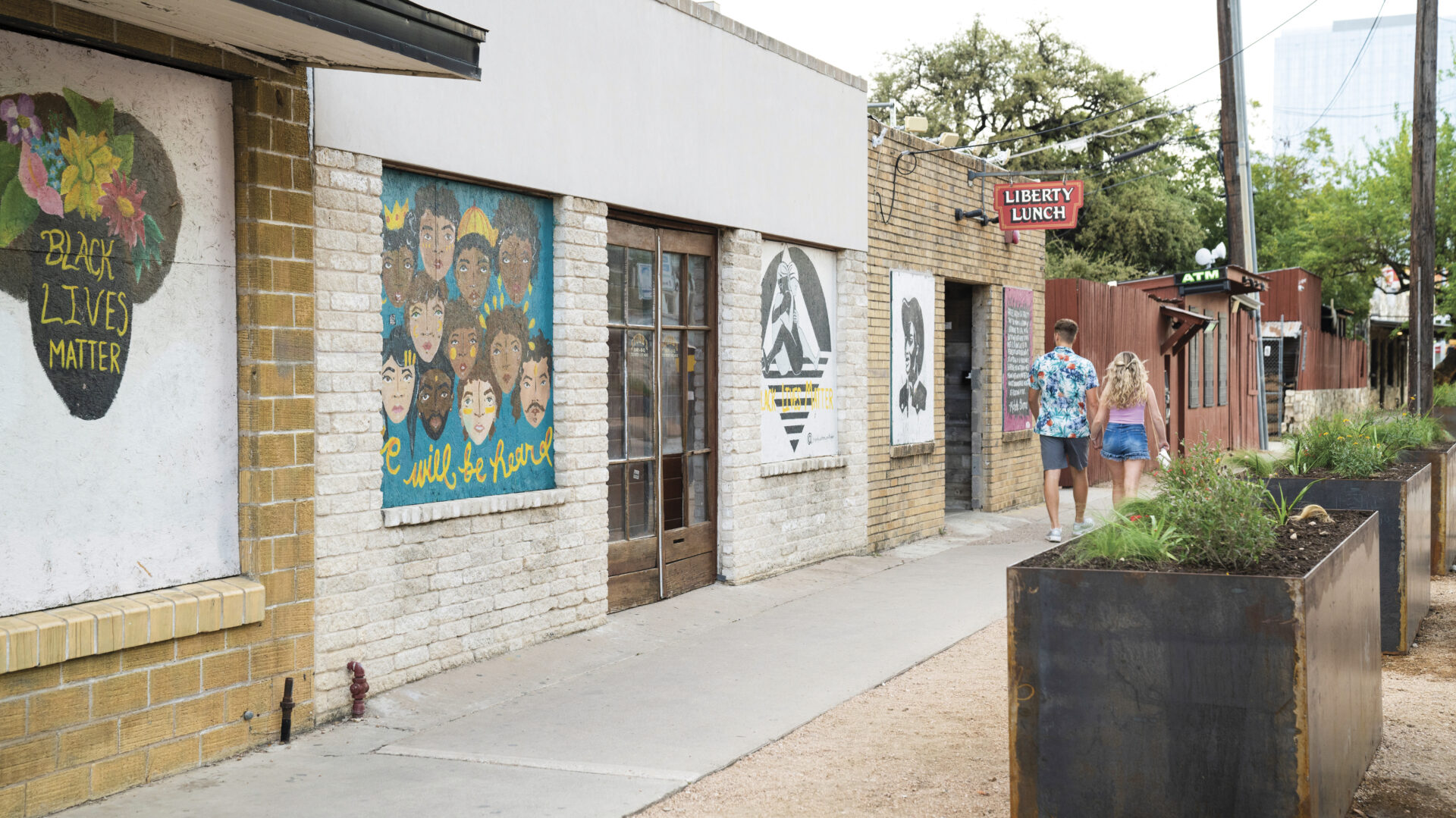
Red River District, photo courtesy of Urbanspace
Red River District
Gritty, eclectic, and endlessly energetic, the Red River Cultural District is a cornerstone of Austin’s legendary music scene. These few blocks have launched countless careers and kept Austin’s “Live Music Capital of the World” reputation alive and loud.
Here, history and nightlife collide in iconic venues like Stubb’s and Mohawk, while clubbier spots like Cheer Up Charlies and Barbarella add to the mix. The recent addition of the Waterloo Park and Moody Amphitheater brings even more green space and cultural programming to the area — further proof that Red River continues to evolve while staying true to its roots.
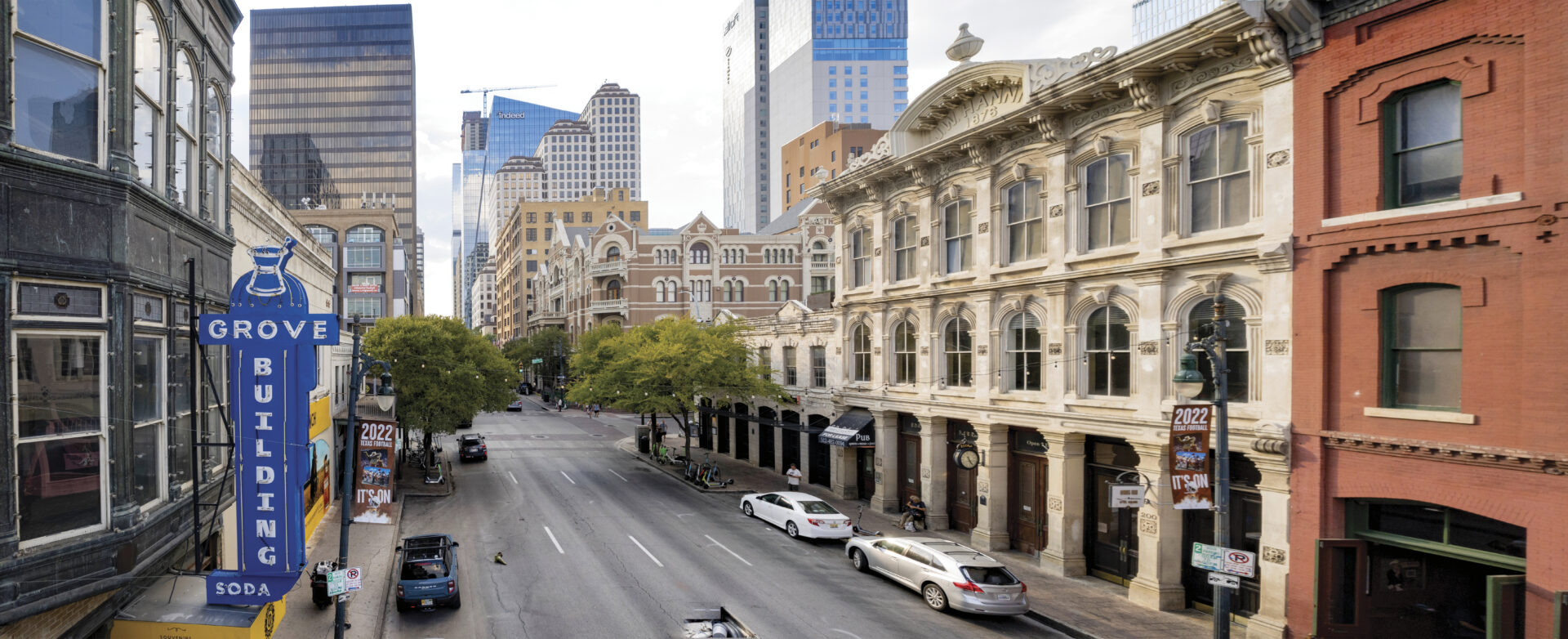
6th Street Historic District, Photo courtesy of Urbanspace
6th Street Historic District
One of the most storied stretches in the city, 6th Street has long been the beating heart of Austin’s nightlife. Originally developed as a trade and commercial corridor in the late 1800s, this historic avenue now buzzes with bars, music venues, and restaurants that draw visitors from around the world.
Places like Parkside and Iron Cactus serve up local flavor alongside architecture that’s been standing for over a century. With plans underway to preserve the district’s historic charm while expanding its appeal, 6th Street is poised for a new chapter — one that honors its past while looking to the future.
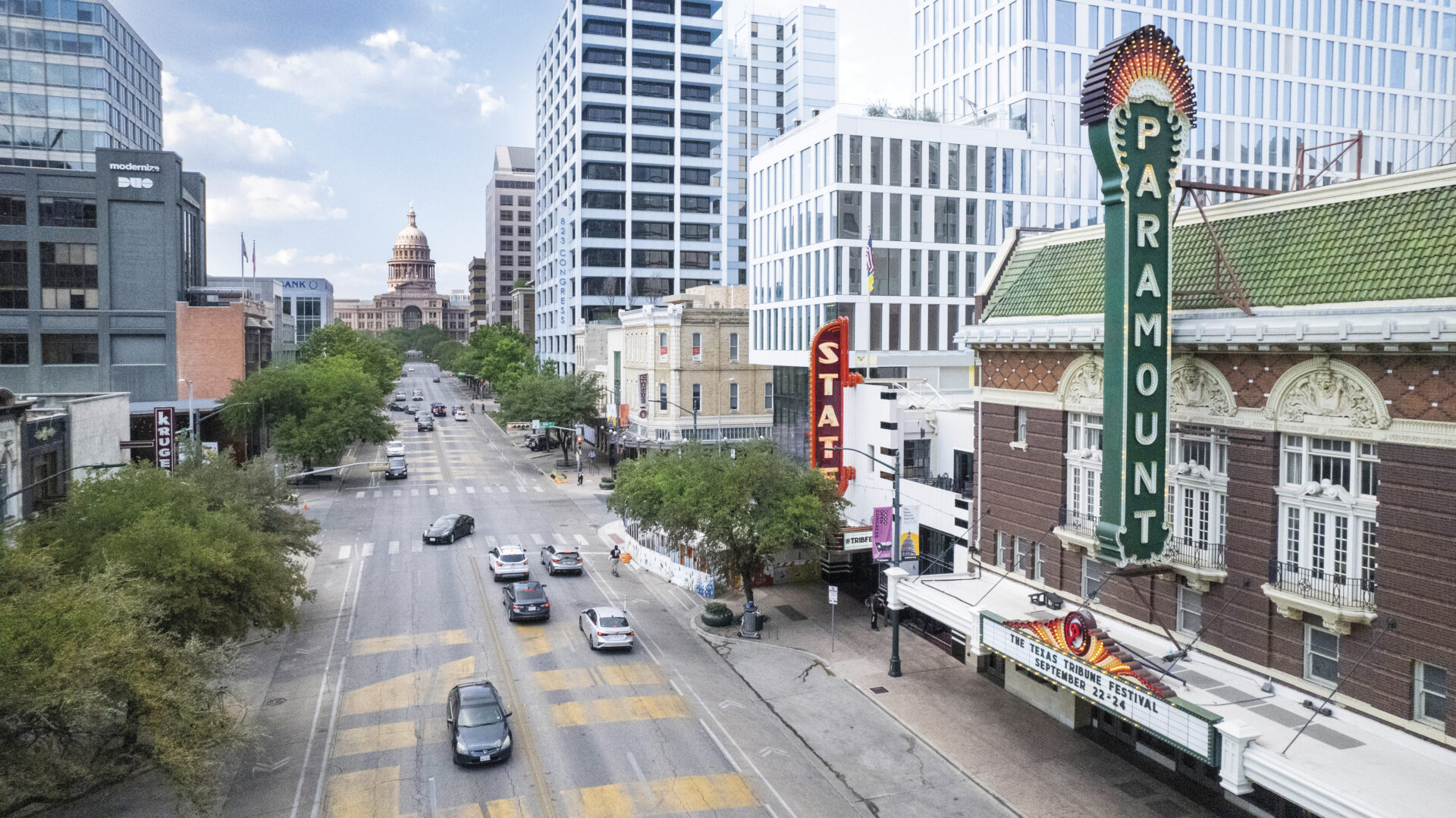
Capitol Complex and Congress Avenue District, Photo courtesy of Urbanspace
Capitol Complex & Congress Ave district
Framed by the majestic Texas State Capitol and lined with historic landmarks, Congress Avenue is Austin’s original Main Street. It’s where government, history, and culture intersect — all within walking distance of downtown’s residential core.
Protected view corridors ensure that the Capitol dome remains visible from across the city, serving as both a literal and symbolic anchor. The surrounding district is home to civic buildings, heritage sites, and green spaces that create a distinctly Austin mix of formality and friendliness. Whether you’re admiring the architecture or enjoying a picnic on the Capitol grounds, this area offers a meaningful connection to the city’s roots.
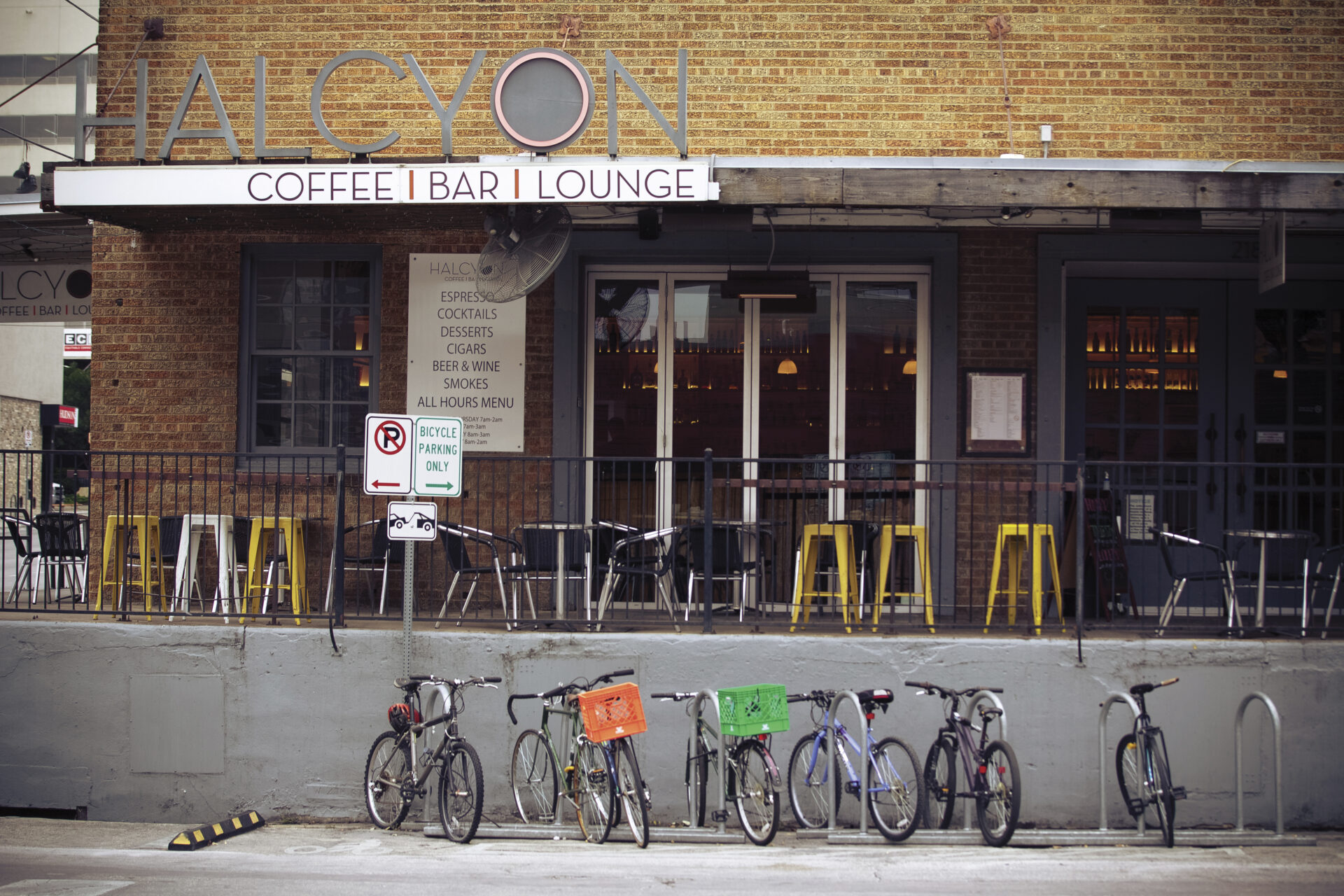
Warehouse District, Photo courtesy of Urbanspace
Warehouse District
Historic brick buildings. Bustling patios. LGBTQ+ nightlife. The Warehouse District has evolved into one of downtown Austin’s most inclusive and lively destinations. Anchored by Republic Square Park and clustered around 4th Street, the neighborhood is a magnet for locals seeking cocktails, conversation, and community.
Many of the district’s restaurants, lounges, and venues are housed in former warehouses, giving the area its distinctive character. It’s also where you’ll find iconic nightlife spots like Rain, Oilcan Harry’s, and Highland Lounge — long-standing fixtures of Austin’s queer culture and late-night scene.
Thinking about moving?
Request the Austin Relocation Guide—neighborhoods, schools, housing tips, and a first-week checklist to hit the ground running.

